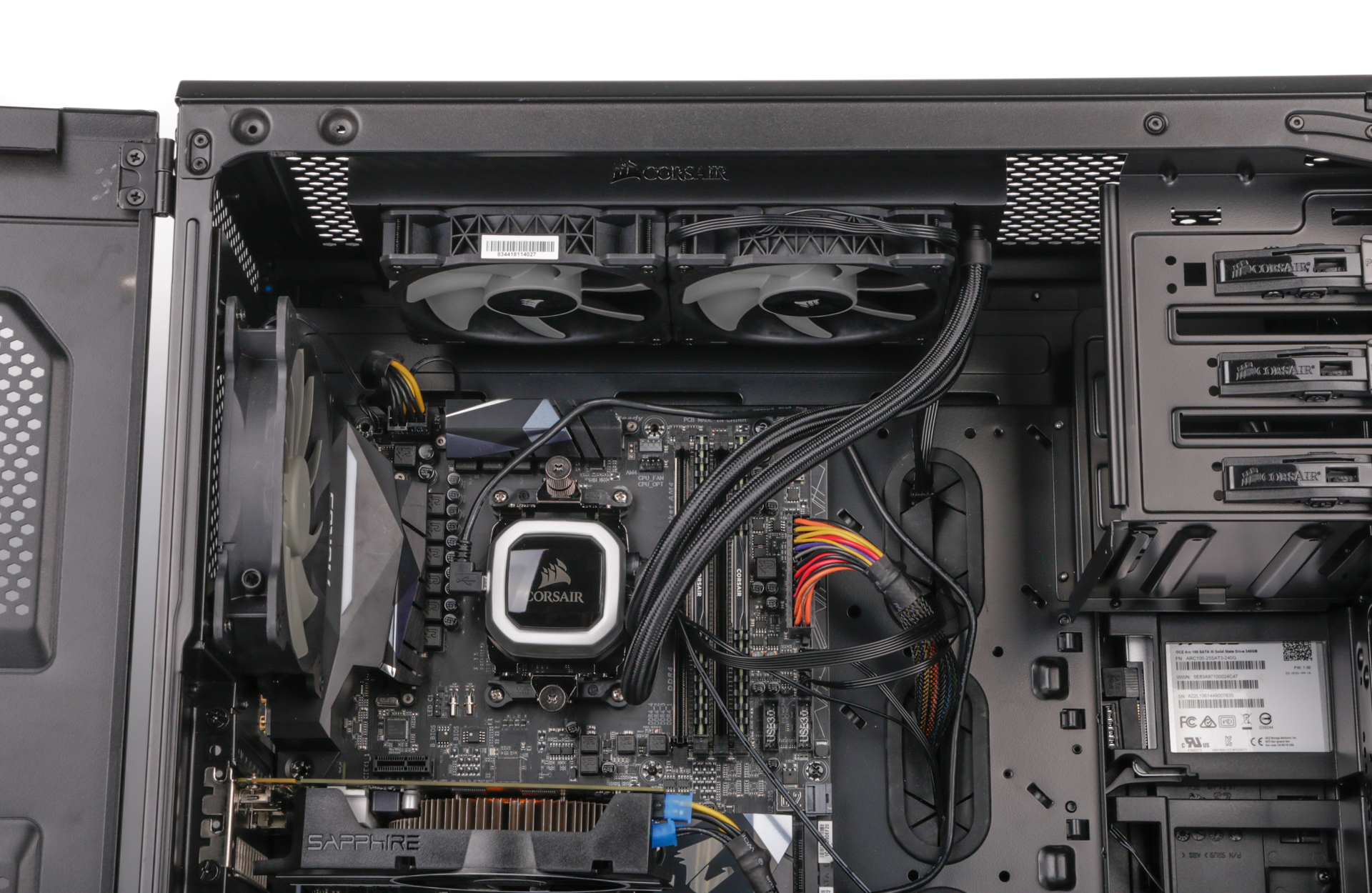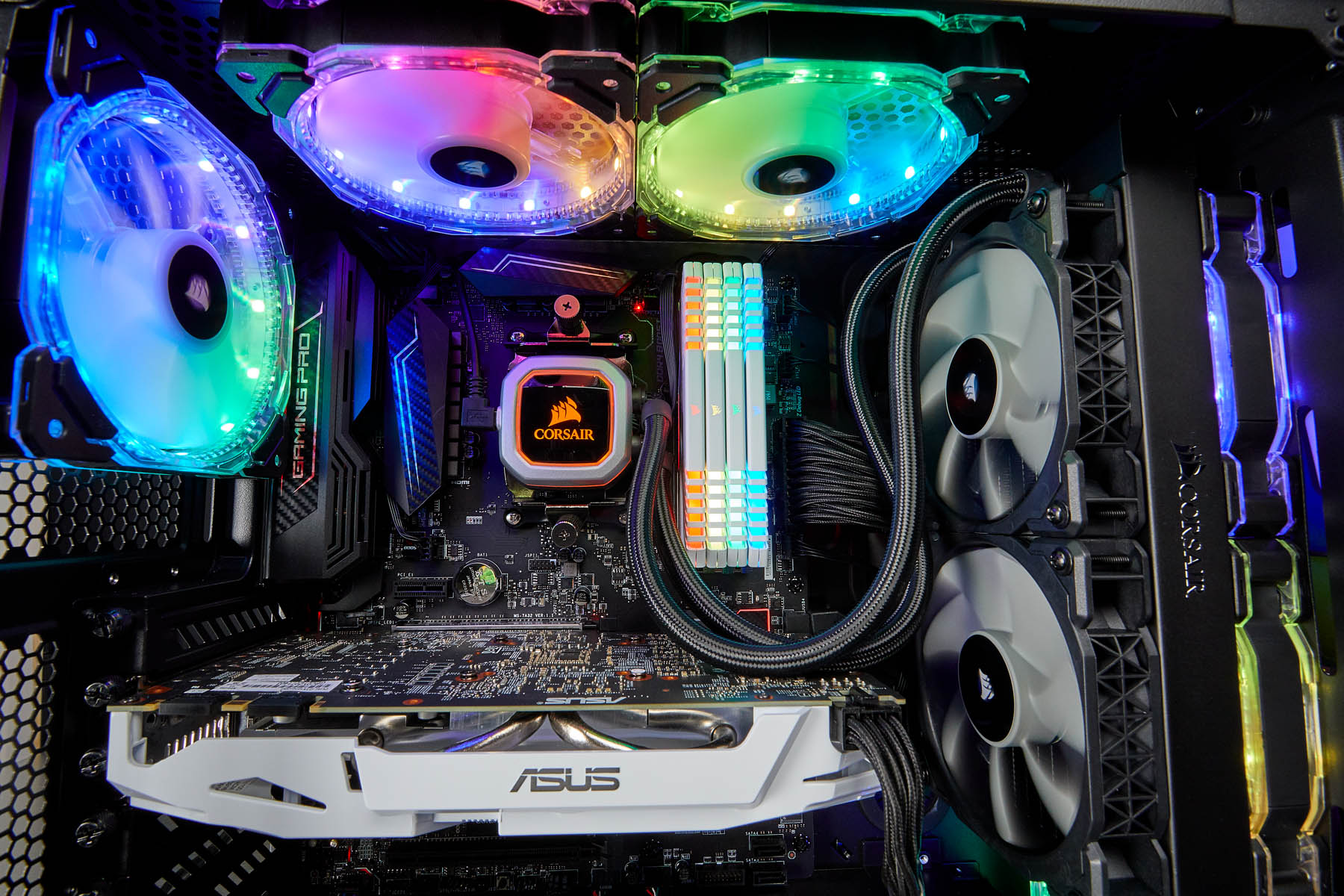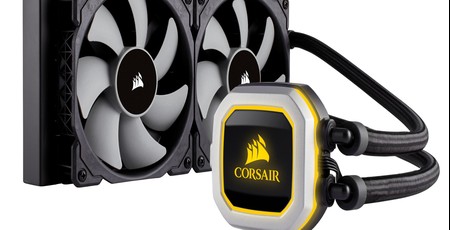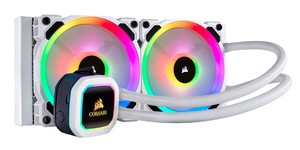Performance Analysis
We mentioned earlier that the higher fan speeds could swing things in the H100i Pro RGB's favour against its larger siblings and it certainly seems that way. Indeed, it wasn't just at maximum speed the fans were faster either. In our AM4 system using the quiet profile, we saw a minimum of 1000rpm reported in Corsair's LINK software compared to 550rpm for the H115i. Perhaps more interestingly, when using the balanced profile, the H100i ramped the fans up to full speed - actually 2,500rpm according to the software, while the H115i only hit 850rpm. The pump speed rose from 1200rpm in the quiet profile to 2100rpm in balanced and finally 2800rpm in performance mode.

It's clear, then, that the fan profiles are much more aggressive here resulting in more noise under load, but also significantly more airflow. As a result, the H100i Pro RGB matched its bigger siblings in our LGA1151 system with a CPU delta T of 43°C. The balanced profile was, unsurprisingly, a little cooler than those of both the H115i and H150i, but the quiet profile was noticeably cooler at 47°C compared to 51°C for the H150i. There wasn't much difference in noise unless you sat right next to the PC due to the fan speed still sitting at around 1000rpm - it was still extremely quiet, but the opposite was true at full speed, where the H100i was much louder than either of the other Corsair coolers.
The performance in our monstrous LGA2066 18-core system showed that the quiet profile is able to ramp up when needed, but it's clear here that the radiator is maybe the bottleneck. The higher heatload compared to the other two test systems meant there was next-to-no difference between the quiet profile and maximum speed for the fan and pumps. It's also the only area we saw the H150i gain any kind of lead over the H100i. Finally, our AM4 system was perhaps the best example of the impact of the H100i's higher fan speeds as each fan and pump profile setting was better than the larger coolers, especially so when it came to the quiet profile where the fact the fans were spinning twice as fast as the H115i at 1000rpm versus 550rpm saw an 8°C lower CPU delta T.

Conclusion
Rather than use similar fans at similar speeds with the smaller H100i Pro RGB and see less performance than the H115i and H150i larger coolers, Corsair has given its 240mm AIO cooler the ability to leapfrog those coolers in airflow by massive margins, resulting in similar or better cooling. Seeing as it costs less and is more compact, that's mostly good news - despite its smaller radiator, the increased airflow means that rather than being the poorer-performing cheaper option, it can actually outperform those coolers in most areas except under extremely high heat loads as we saw in our LGA2066 system.
This extra performance does come at a cost, though, which is noise. It's a far louder cooler than its larger siblings under medium-to-high loads, with the latter clearly geared towards offering good cooling but with minimal noise. However, this doesn't mean any of the three coolers are redundant. The H150i is still a monster when it comes to dealing with high heatloads, while the H115i offers super-low noise levels and still great cooling for just £10 more than the H100i. If noise is less of a concern, though, then the H100i Pro RGB is an excellent cooler for the cash, is compatible with a wider range of cases and has the cooling prowess to deal with any current desktop CPU when overclocked. The extra tweaking available compared to previous generations and some added RGB pizazz mean that aesthetics and sophistication are strong points, too.


MSI MPG Velox 100R Chassis Review
October 14 2021 | 15:04









Want to comment? Please log in.